HSBC 2009 Annual Report Download - page 17
Download and view the complete annual report
Please find page 17 of the 2009 HSBC annual report below. You can navigate through the pages in the report by either clicking on the pages listed below, or by using the keyword search tool below to find specific information within the annual report.-
 1
1 -
 2
2 -
 3
3 -
 4
4 -
 5
5 -
 6
6 -
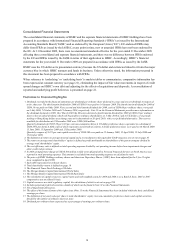 7
7 -
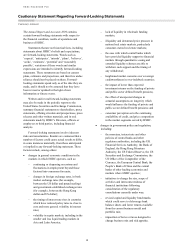 8
8 -
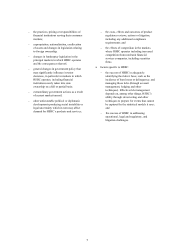 9
9 -
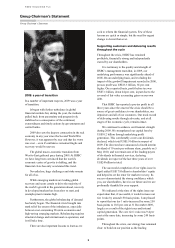 10
10 -
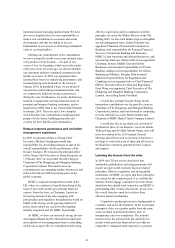 11
11 -
 12
12 -
 13
13 -
 14
14 -
 15
15 -
 16
16 -
 17
17 -
 18
18 -
 19
19 -
 20
20 -
 21
21 -
 22
22 -
 23
23 -
 24
24 -
 25
25 -
 26
26 -
 27
27 -
 28
28 -
 29
29 -
 30
30 -
 31
31 -
 32
32 -
 33
33 -
 34
34 -
 35
35 -
 36
36 -
 37
37 -
 38
38 -
 39
39 -
 40
40 -
 41
41 -
 42
42 -
 43
43 -
 44
44 -
 45
45 -
 46
46 -
 47
47 -
 48
48 -
 49
49 -
 50
50 -
 51
51 -
 52
52 -
 53
53 -
 54
54 -
 55
55 -
 56
56 -
 57
57 -
 58
58 -
 59
59 -
 60
60 -
 61
61 -
 62
62 -
 63
63 -
 64
64 -
 65
65 -
 66
66 -
 67
67 -
 68
68 -
 69
69 -
 70
70 -
 71
71 -
 72
72 -
 73
73 -
 74
74 -
 75
75 -
 76
76 -
 77
77 -
 78
78 -
 79
79 -
 80
80 -
 81
81 -
 82
82 -
 83
83 -
 84
84 -
 85
85 -
 86
86 -
 87
87 -
 88
88 -
 89
89 -
 90
90 -
 91
91 -
 92
92 -
 93
93 -
 94
94 -
 95
95 -
 96
96 -
 97
97 -
 98
98 -
 99
99 -
 100
100 -
 101
101 -
 102
102 -
 103
103 -
 104
104 -
 105
105 -
 106
106 -
 107
107 -
 108
108 -
 109
109 -
 110
110 -
 111
111 -
 112
112 -
 113
113 -
 114
114 -
 115
115 -
 116
116 -
 117
117 -
 118
118 -
 119
119 -
 120
120 -
 121
121 -
 122
122 -
 123
123 -
 124
124 -
 125
125 -
 126
126 -
 127
127 -
 128
128 -
 129
129 -
 130
130 -
 131
131 -
 132
132 -
 133
133 -
 134
134 -
 135
135 -
 136
136 -
 137
137 -
 138
138 -
 139
139 -
 140
140 -
 141
141 -
 142
142 -
 143
143 -
 144
144 -
 145
145 -
 146
146 -
 147
147 -
 148
148 -
 149
149 -
 150
150 -
 151
151 -
 152
152 -
 153
153 -
 154
154 -
 155
155 -
 156
156 -
 157
157 -
 158
158 -
 159
159 -
 160
160 -
 161
161 -
 162
162 -
 163
163 -
 164
164 -
 165
165 -
 166
166 -
 167
167 -
 168
168 -
 169
169 -
 170
170 -
 171
171 -
 172
172 -
 173
173 -
 174
174 -
 175
175 -
 176
176 -
 177
177 -
 178
178 -
 179
179 -
 180
180 -
 181
181 -
 182
182 -
 183
183 -
 184
184 -
 185
185 -
 186
186 -
 187
187 -
 188
188 -
 189
189 -
 190
190 -
 191
191 -
 192
192 -
 193
193 -
 194
194 -
 195
195 -
 196
196 -
 197
197 -
 198
198 -
 199
199 -
 200
200 -
 201
201 -
 202
202 -
 203
203 -
 204
204 -
 205
205 -
 206
206 -
 207
207 -
 208
208 -
 209
209 -
 210
210 -
 211
211 -
 212
212 -
 213
213 -
 214
214 -
 215
215 -
 216
216 -
 217
217 -
 218
218 -
 219
219 -
 220
220 -
 221
221 -
 222
222 -
 223
223 -
 224
224 -
 225
225 -
 226
226 -
 227
227 -
 228
228 -
 229
229 -
 230
230 -
 231
231 -
 232
232 -
 233
233 -
 234
234 -
 235
235 -
 236
236 -
 237
237 -
 238
238 -
 239
239 -
 240
240 -
 241
241 -
 242
242 -
 243
243 -
 244
244 -
 245
245 -
 246
246 -
 247
247 -
 248
248 -
 249
249 -
 250
250 -
 251
251 -
 252
252 -
 253
253 -
 254
254 -
 255
255 -
 256
256 -
 257
257 -
 258
258 -
 259
259 -
 260
260 -
 261
261 -
 262
262 -
 263
263 -
 264
264 -
 265
265 -
 266
266 -
 267
267 -
 268
268 -
 269
269 -
 270
270 -
 271
271 -
 272
272 -
 273
273 -
 274
274 -
 275
275 -
 276
276 -
 277
277 -
 278
278 -
 279
279 -
 280
280 -
 281
281 -
 282
282 -
 283
283 -
 284
284 -
 285
285 -
 286
286 -
 287
287 -
 288
288 -
 289
289 -
 290
290 -
 291
291 -
 292
292 -
 293
293 -
 294
294 -
 295
295 -
 296
296 -
 297
297 -
 298
298 -
 299
299 -
 300
300 -
 301
301 -
 302
302 -
 303
303 -
 304
304 -
 305
305 -
 306
306 -
 307
307 -
 308
308 -
 309
309 -
 310
310 -
 311
311 -
 312
312 -
 313
313 -
 314
314 -
 315
315 -
 316
316 -
 317
317 -
 318
318 -
 319
319 -
 320
320 -
 321
321 -
 322
322 -
 323
323 -
 324
324 -
 325
325 -
 326
326 -
 327
327 -
 328
328 -
 329
329 -
 330
330 -
 331
331 -
 332
332 -
 333
333 -
 334
334 -
 335
335 -
 336
336 -
 337
337 -
 338
338 -
 339
339 -
 340
340 -
 341
341 -
 342
342 -
 343
343 -
 344
344 -
 345
345 -
 346
346 -
 347
347 -
 348
348 -
 349
349 -
 350
350 -
 351
351 -
 352
352 -
 353
353 -
 354
354 -
 355
355 -
 356
356 -
 357
357 -
 358
358 -
 359
359 -
 360
360 -
 361
361 -
 362
362 -
 363
363 -
 364
364 -
 365
365 -
 366
366 -
 367
367 -
 368
368 -
 369
369 -
 370
370 -
 371
371 -
 372
372 -
 373
373 -
 374
374 -
 375
375 -
 376
376 -
 377
377 -
 378
378 -
 379
379 -
 380
380 -
 381
381 -
 382
382 -
 383
383 -
 384
384 -
 385
385 -
 386
386 -
 387
387 -
 388
388 -
 389
389 -
 390
390 -
 391
391 -
 392
392 -
 393
393 -
 394
394 -
 395
395 -
 396
396 -
 397
397 -
 398
398 -
 399
399 -
 400
400 -
 401
401 -
 402
402 -
 403
403 -
 404
404 -
 405
405 -
 406
406 -
 407
407 -
 408
408 -
 409
409 -
 410
410 -
 411
411 -
 412
412 -
 413
413 -
 414
414 -
 415
415 -
 416
416 -
 417
417 -
 418
418 -
 419
419 -
 420
420 -
 421
421 -
 422
422 -
 423
423 -
 424
424 -
 425
425 -
 426
426 -
 427
427 -
 428
428 -
 429
429 -
 430
430 -
 431
431 -
 432
432 -
 433
433 -
 434
434 -
 435
435 -
 436
436 -
 437
437 -
 438
438 -
 439
439 -
 440
440 -
 441
441 -
 442
442 -
 443
443 -
 444
444 -
 445
445 -
 446
446 -
 447
447 -
 448
448 -
 449
449 -
 450
450 -
 451
451 -
 452
452 -
 453
453 -
 454
454 -
 455
455 -
 456
456 -
 457
457 -
 458
458 -
 459
459 -
 460
460 -
 461
461 -
 462
462 -
 463
463 -
 464
464 -
 465
465 -
 466
466 -
 467
467 -
 468
468 -
 469
469 -
 470
470 -
 471
471 -
 472
472 -
 473
473 -
 474
474 -
 475
475 -
 476
476 -
 477
477 -
 478
478 -
 479
479 -
 480
480 -
 481
481 -
 482
482 -
 483
483 -
 484
484 -
 485
485 -
 486
486 -
 487
487 -
 488
488 -
 489
489 -
 490
490 -
 491
491 -
 492
492 -
 493
493 -
 494
494 -
 495
495 -
 496
496 -
 497
497 -
 498
498 -
 499
499 -
 500
500 -
 501
501 -
 502
502 -
 503
503 -
 504
504
 |
 |
15
sector alike. Tight financing conditions as well as a
sharp fall in asset prices in some parts of the region
will also weigh on an expected increase in private
consumption levels.
Provided the external environment continues to
strengthen, regional non-commodity exporters such
as Egypt should see the recent downturn in demand
for tourism and trade services slowly reverse,
offering additional support for growth.
With most regional economies basing their
monetary regimes around a US dollar-peg, interest
rates are expected to remain at historically low levels
across much of the region in 2010. Coupled with
growth in government spending and gains in global
commodity prices, this may result in a rise in
inflation. After the sharp economic downturn of
2009, however, the increase in price pressure is
unlikely to be pronounced.
North America
In 2009, the economic backdrop in the US continued
to be characterised by tight credit conditions,
reduced economic growth and a weak housing
market. Against this, market confidence began to
increase, beginning in the second quarter of the year,
stemming largely from government initiatives to
restore faith in the capital markets, and the benefits
to borrowers of the prolonged period of low Federal
funds rates. The latter put pressure on spreads earned
on HSBC’s deposit base, however. As the disruption
to financial markets eased, evidence emerged of
contracting credit spreads and improved liquidity
during 2009, beginning in the second quarter of the
year, enabling many companies to issue debt and
raise new capital.
The reduction in uncertainty helped capital
markets to recover and stock markets to rise. Signs
of stabilisation in house prices, most notably in the
lower price ranges, began to emerge in the third
quarter of the year. An improvement in
unemployment and a sustained recovery in the
housing market continue to remain critical to
consumer confidence and a broader US economic
recovery. Although consumer confidence has
improved, it remains depressed on a historical basis,
driven by declines in household income and wealth
and the job market remaining difficult. It is likely
that these conditions will continue to constrain the
Group’s results into 2010, although the degree to
which this happens remains uncertain.
On 14 January 2010, the US Administration
announced its intention to propose a Financial Crisis
Responsibility Fee to be assessed against financial
institutions with more than US$50 billion on
consolidated assets for at least 10 years. It is not
possible to assess the financial impact of this
proposal, however, until final legislation has been
enacted.
Latin America
Economic activity in Latin America was affected by
the global economic recession in 2009. The region’s
weighted average GDP is expected to fall by 2.7 per
cent in the year, though growth may resume in 2010
given the outlook for world trade and a rebound in
economic activity. Unemployment rates in the region
rose in 2009 and it is probable that this trend will
continue, albeit at a slower pace as economies begin
to recover. Inflation fell due to falling commodity
prices and lower demand. These effects will begin to
reverse in 2010 and consequently inflation may rise.
HSBC is positioning itself to grow in select
customer markets, though challenges remain to
expanding business volumes. Margin pressures are
expected to continue throughout the region due to
fierce competition for prime customers and lower
interest rates than the historical averages. Any
further reduction in GDP and increase in
unemployment will negatively affect business
activity, compounded by uncertainty surrounding
presidential elections in Costa Rica, Colombia and
Brazil in 2010 and in Peru and Argentina in 2011.
Liquidity and funding risks are inherent in
HSBC’s business
HSBC’s business model is founded upon having
ready access to financial resources whenever
required to meet its obligations and grow its
business. To this end, HSBC entities seek to
maintain a diversified and stable funding base
comprising core retail and corporate customer
deposits and institutional balances, and certain
entities augment this with modest amounts of
long-term wholesale funding. In addition, HSBC
holds portfolios of highly liquid assets diversified
by currency and maturity to enable it to respond to
unusual liquidity requirements.
Where markets become illiquid, the value at
which financial instruments can be realised is highly
uncertain, and although processes are available to
estimate fair values, they require substantial
elements of judgement, assumptions and estimates
(which may change over time). The risk of
illiquidity, therefore, may reduce capital resources as
valuations decline. Actions or the threat of actions by
third parties and independent market participants,
such as rating agency downgrades of instruments to
which HSBC has exposure, can result in reduced
